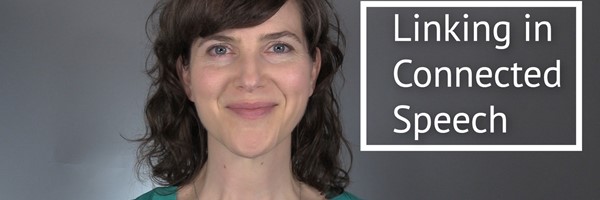I’m going to say a sentence two different ways. Which one sounds more natural.
I owe him twenty bucks.
I...owe...him...twenty...bucks.
Most of you should hear that the first sentence sounded much more natural than the second sentence...but why? I pronounced each sound correctly, so why did the first sentence sound better than the second sentence?
It’s because of linking. In the first sentence, I connected the words together, so the sentence sounded like one, long word. That is how American English is spoken - native speakers will link words together to smooth out the transitions between words.
Linking happens as often as it can in spoken English, both between words and within words.
Here is an example of word to word linking: I miss someone. Listen to how I linked the words miss and someone by extending the S sound. I miss someone.
Here is an example of linking within a word: triathlon. Notice how I smoothed out the transition from the AI in tri to the AA in ath. Triathlon, triathlon. I did that by adding a small Y sound. Listen again: triathlon.
I can’t discuss all the linking that occurs in spoken English in this video, so today I want to discuss the linking that happens between vowels, like in the word triathlon.
Vowel to Vowel Linking
When one word or syllable ends in a vowel, and the next word or syllable begins with a vowel, we insert a glide sound to connect them together - either J or W.
Which glide sound will depend on the position of your lips.
If your lips are spread out, like in the EE /i/ and AI /aɪ/ vowels, you use the Y sound to connect the words together.
For example, listen to how I link the words the and end with a Y glide: The end. The end. My vocal cords vibrate the entire time, so there is a smooth connection between the words: The end.
This is what it sounds like if I don’t use a glide: The end. The end. You can hear a distinct break in the vibration between the words. The end.
Here is it again, but with the linking glide: The end.
If your lips are rounded, like in the OH /oʊ/ and OO /u/ vowels, then you use a W sound to connect the words together. For example, listen to how I link the words go and away with the W sound: Go away. Go away. Again, there is a smooth connection between the words because my vocal cords are vibrating the entire time. Go away.
This is what is sounds like if don’t use a glide: Go away. Go away. Now with the glide: Go away. Go away.
Y /j/ Linking Practice
Let’s practice vowel to vowel linking, and first I’ll use the Y glide.
The apple.
I understand.
Triangle.
Tie it down.
Reaction.
W /w/ Linking Practice
Now let’s practice vowel to vowel linking using the W glide.
You ate.
How are you?
Doing.
Two hours.
No one.
Thanks so much for watching! And I'd love to hear from you - contact me to learn how we can work together to perfect your American English pronunciation!



